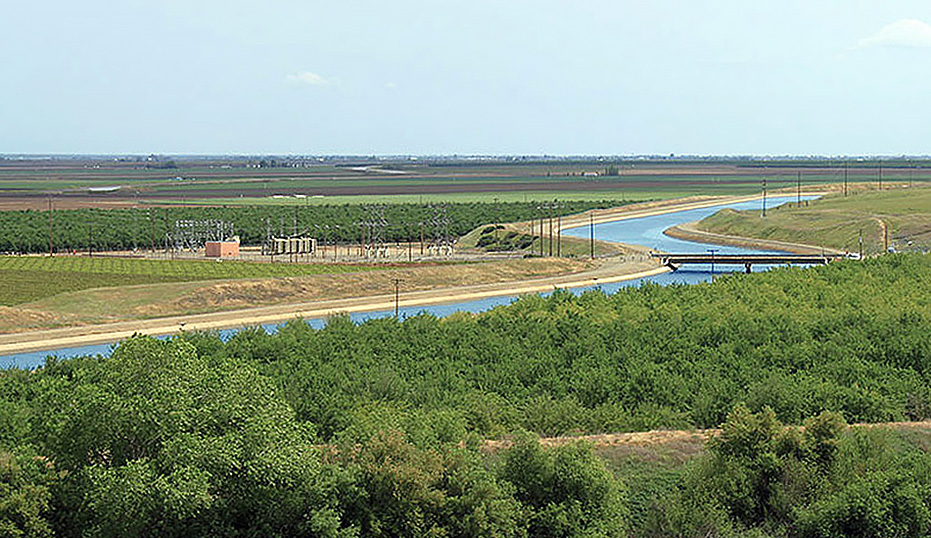
Mar 9, 2022Diverters reminded to measure water use under law
Data is key to better understanding and managing California’s water supply. However, the state reports a lack of compliance by affected water-rights holders, who are required to report the water they divert.
“Even though we initially opposed the regulation, it is the law, so it is very important that people are in compliance,” said Danny Merkley, California Farm Bureau director of water resources. “It protects our existing water-rights system, which was designed for times of scarcity, like we have now, and it works if we get the data.”
Regulations adopted by the State Water Resources Control Board in 2016 established penalties for those required to measure and report water diversions.
Mandated under Senate Bill 88 in 2015, the rules apply to those who have previously diverted or intend to divert more than 10 acre-feet per year. They also impact water-rights holders who are authorized to divert more than 10 acre-feet per year under a permit, license or registration.
“It is going to be very important that we find a way to get more people to be in compliance,” Merkley said. “Until recently, there were no penalties. There are penalties now, and $500 a day can add up pretty quick.”
As of Jan. 25, the compliance rate statewide was just 39%, said Allen Laca, a senior water resource control engineer with the state water board’s division of water rights.
“The stats tell a story that the regulations are difficult to understand and, consequently, difficult to comply with,” said Laca, who took part in a session on the topic at the California Irrigation Institute’s conference in Sacramento last week. “Staff is developing a public outreach plan to improve data submission and compliance with SB 88. We understand it is complicated, and we are committed to helping the community provide the data we need.”
For diversion or storage of 100-acre feet or more annually, SB 88 also requires that installation and certification of measurement methods be approved by a professional engineer or licensed contractor.
Assembly Bill 589, which is in effect until Jan. 1, 2023, allows diverters to install and maintain devices or implement methods of measurement. But to be considered qualified to do so, they must complete an instructional course on measurement devices and methods administered by the University of California Cooperative Extension (UCCE) and pass a proficiency test.
The instructional course also clarifies reporting requirements and helps ranchers and water-rights holders understand which meters are appropriate measurement tools. Participants also learn how to determine measurement equipment accuracy and develop an understanding of measurement weirs and how to calculate and report volume from flow data.
“One thing that I heard as we started to work through this was, ‘Why do we have to do this?”’ said Larry Forero, a UCCE livestock and natural resources farm advisor. “It was like, well, you always were supposed to do it. Since 1965, you were supposed to, and then in 2009, the water code provided that you need to, and there’s penalties if you don’t.”
Forero offered assurances to water diverters. “If you make an effort to try to get in compliance, you’re going to be OK. That has been my experience with state board staff,” he said.
Modoc County rancher Glenn Nader, a former UCCE livestock and natural resources advisor, said he was one of the affected diverters who didn’t know he was required to report.
He said he took part in the training course and thanked the state water board and UCCE for providing diverters with the education that ultimately resulted in cost savings for him.
“The other thing that this training did is it gave us the technical resource to call with questions,” Nader said. “I think that’s important, and we need to continue to build on that. We need more technical resources. We complain all the time as ranchers, but there were some benefits to doing this.”
UCCE is developing an online training course, and Forero said more technical support is needed to address site-specific situations. “Because every situation is different, that would really help get to the next stage of implementation,” he said.
A challenge to compliance, Laca said, is small diverters do not have the resources to install the equipment.
“What we’ve seen is small diverters will either revoke their water right or decrease their face value to avoid measurement regulations,” Laca said.
To assist diverters and increase the rate of compliance, two bills were introduced in the State Legislature. SB 880 by Sen. John Laird, D-Santa Cruz, indefinitely extends the sunset date for AB 589. SB 832, by Sen. Bill Dodd, D-Napa, allows for a different way to report diversions for people who use evapotranspiration rates. California Farm Bureau has expressed concerns over those rates and is suggesting bill amendments, Merkley said.
“State water board staff is not looking to be punitive,” said Merkley, who also serves as director of the California Irrigation Institute. “They’re looking for compliance, so they know what the flows are and how much water is or is not available and don’t have to curtail legal water-right users before it is necessary. If you’re trying to be compliant, then they’re going to work with you.”
Laca said compliance is the state’s main objective.
“We’re not looking to put people out of business,” he said. “If you need help or you have questions with your compliance status, reach out to us.”
– Christine Souza, California Farm Bureau









